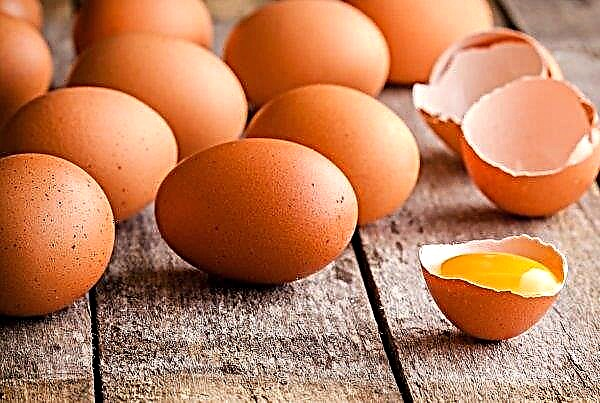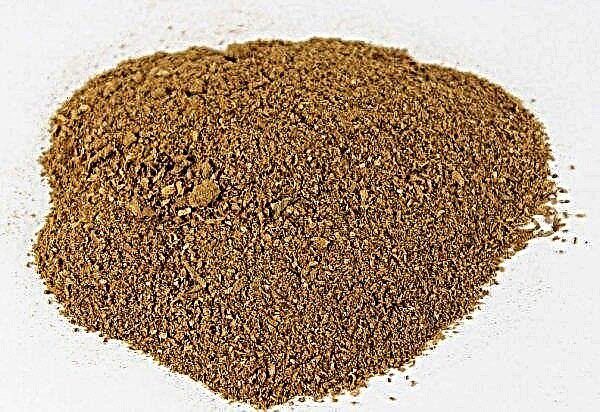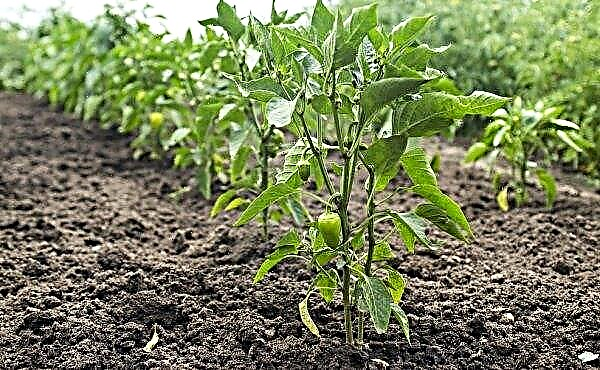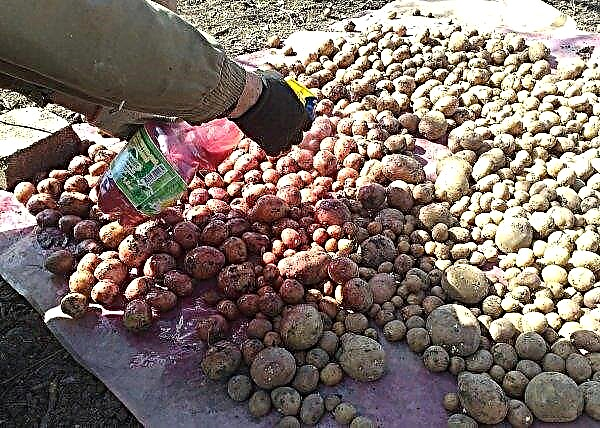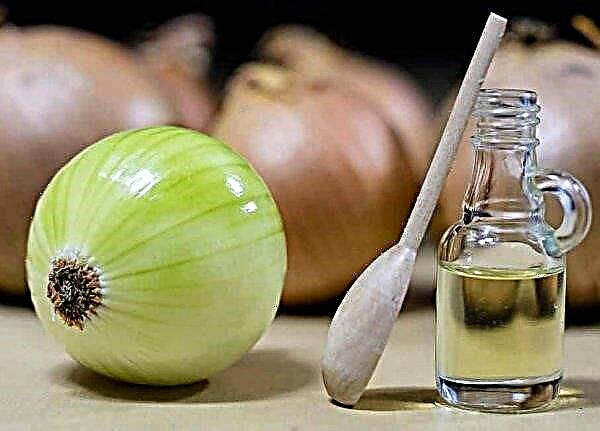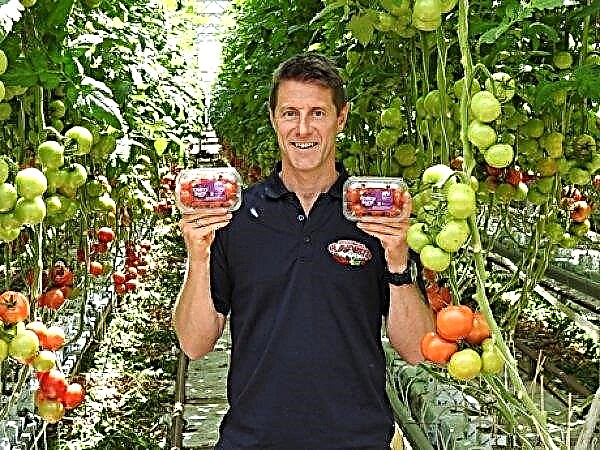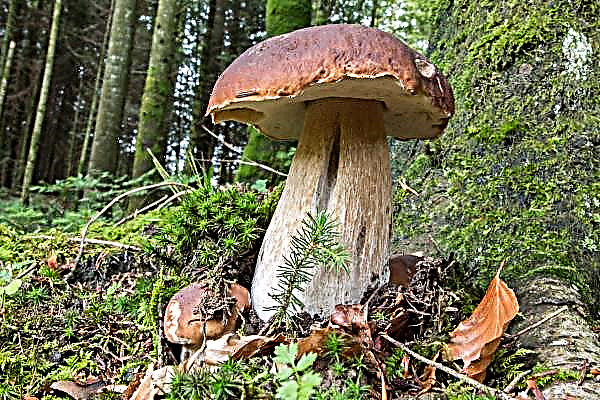Today, greenhouse constructions can be found in almost every household plot, because such constructions allow you to get a crop all year round, regardless of weather and climatic conditions. One of the important factors in the design of greenhouses that allow you to maintain the necessary microclimate, in addition to natural lighting and ventilation, is the heating of greenhouses. It is on the right choice of heating system that the indicators of the quantity and quality of the crop in winter depend.
Requirements, advantages and disadvantages
The first thing to consider when designing heating for uniform heating of soil and greenhouse air is the material of manufacture. It will become the primary factor determining the size of heat loss, which will need to be compensated by heat supply.
Did you know? The Eden Greenhouse, located in the United Kingdom in Cornwall County, has the largest area — 1.5 ha.
There are various options for heating in greenhouses that can be done independently, and the determining criterion is the choice of energy carrier - you can heat a room with gas, solid fuel, water or electricity. Allocate the basic requirements that the heating system must meet:
Allocate the basic requirements that the heating system must meet:
- Humidity - the work of heat supply should not reduce the moisture level in the room, since a sharp drop in this indicator can cause a deterioration in the quality of growth and development of plants. Depending on the type of crops grown, the humidity level should vary between 45–75%.
- Heat exchange air - The best option is, first of all, heating the soil, and then - heating the air in the room.
- Security level - Plants can be subjected to sudden changes in temperature associated with distances to heating appliances. Such situations can be avoided by setting the low-temperature operation mode of infrared heating of greenhouses.
- Autonomy and safety level of functioning of heat supply - in the cold season, even minor interruptions in the operation of the heating system can lead to a sharp decrease in temperature in the greenhouse and even frost on the soil. Therefore, despite the selected type of heating, it is recommended to equip the greenhouse with devices that control the air temperature.
Important! No heating system can create the necessary conditions in a greenhouse without additional insulation and sealing of the entire structure.
- The organization of an air distribution system with your own hands, in addition to ease of installation in comparison with water heating, has many advantages:
- The use of air as a coolant exerts less load on the walls of the pipeline, which virtually eliminates the formation of leaks and corrosion, and also reduces the quality requirements of pipes. Even in case of emergency as a result of breakdowns, the consequences will not be as significant as, for example, when a pipeline breaks.
- In the winter season, air heating eliminates the freezing of pipes, and therefore the system does not require special maintenance.
- The air heating system provides the possibility of zoning the room, which is very convenient when growing different types of crops.
- The air heating system belongs to cost-effective equipment - the efficiency indicators under the conditions of minimum fuel consumption are about 85%.
- Among the minuses of such systems are noted:
- The air has a low thermal conductivity, therefore, to prevent rapid cooling of the greenhouse, the system should function almost continuously.
- When a full-fledged air heating system is installed, the flow will be provided by a fan, which makes the heating dependent on electricity. In areas with frequent power outages, this option is only suitable if you purchase an uninterruptible power supply (UPS).
- The difference in air temperature at the bottom of the room and at the top can be up to 12 ° C.

Air heating methods
Air heating is an efficient and reliable way to heat greenhousesdue to which in half an hour the temperature in the room can rise to + 17–20 ° С. Next, we consider several basic methods of air heating.
Using ovens
Stove heating is the most acceptable option for heating greenhouses.
There are several main types of such heating:
- The easiest way is to use electric convectorsthat can be placed on the floor or suspended from the ceiling. The principle of operation of such equipment is quite simple: inside the metal casing with the presence of upper and lower holes, a heating element is placed, and on the outside there is a handle with which the temperature is regulated. The lower holes gravity draw in cold air, and the upper ones give the heated. Such devices can have different capacities, and therefore are used in greenhouses of various sizes. In addition to easy installation, this type of heater is characterized by silent operation, high heating rate and moderate cost. The disadvantages are the dependence on electricity, so this option is not always suitable for regions with frequent voltage drops. But here, the UPS can come to the rescue.
- Often farmers resort to gas heating of greenhousesdue to the relatively low cost of raw materials, uniform and fast heating, as well as ease of maintenance of the system. However, this option also has some features: the installation of such equipment is necessarily coordinated with special services, and independent manufacture and installation are completely excluded, since there is a danger of ignition, explosion and poisoning in the absence of a ventilation system.


As the main gas equipment can be used:
- convectors - a type of heat exchanger capable of evenly distributing heat throughout the greenhouse, and ventilation is provided using a coaxial chimney;
- heaters equipped with two open burners - have a vertical chimney, but the ventilation system requires a separate installation;
- infrared burners - do not require additional ventilation and are used as local heating of individual zones.
Most often, gas heating is not used autonomously, but is an addition to the main type of heating (usually water).
Did you know? On the territory of the Sahara desert, a whole greenhouse complex called the Green Sahara was created. To cool the greenhouses and their watering, sea water is used, which is specially desalinated using electricity from solar panels.
Water heaters with sleeves
Water heating with smooth pipes, despite all the advantages, has a significant drawback - the accumulation of warm air at the top, when it is required in the zone of plant growth. To balance the situation, the rest of the space needs to be filled with warmer air. Given the temperature difference, which can reach about 7–8 ° С, such a need leads to large heat losses. Therefore, as an exit from the situation, forced mixing of air from different layers is used.
To balance the situation, the rest of the space needs to be filled with warmer air. Given the temperature difference, which can reach about 7–8 ° С, such a need leads to large heat losses. Therefore, as an exit from the situation, forced mixing of air from different layers is used.
For this purpose, air heating is used, namely, fan heaters equipped with air ducts from polyethylene hoses, which, located at one end of the greenhouse and heating it, supply heat through the sleeve to the other end (in this case, heat is distributed through perforated holes in the sleeve over the entire area of the greenhouse). This method makes it possible to install only one device to ensure efficient maintenance of large areas.
This method makes it possible to install only one device to ensure efficient maintenance of large areas. Such equipment is of great relevance in greenhouses in which highly growing plants are grown.that allows not to use jet mixing of air in the room.
Such equipment is of great relevance in greenhouses in which highly growing plants are grown.that allows not to use jet mixing of air in the room.
Infrared emitters
Infrared heating is a type of electric heating in greenhouses and every year is gaining more and more popularity among farmers.
This is explained by the principles of the system: heating plants and soil instead of air, which leads to a significant minimization of costs. Among the main options for IR heating, the following are noted:
Among the main options for IR heating, the following are noted:
- Infrared lamps or heaters - the emitters are placed in a protective casing equipped with a reflector, which ensures efficient distribution of rays, and suspended from the ceiling or walls (depending on the power of the lamps, the distance between them varies from 1.5 to 3 m).
- Film - infrared film coating can be laid in the soil or fixed on the walls and ceiling.
Important! The area and temperature of the heating depend on the location of the infrared heater — the higher the emitter is installed, the larger the room’s heated volume and the lower the temperature.
The most cost-effective option is soil heating, which warms not only the soil, but also the lower layers of air. This approach saves energy consumption. However, when replacing the fertile layer of the earth, there is a risk of damage to the IR system.
Summing up, it is worth noting that the choice of a heating system depends not only on the preferences and financial capabilities of the consumer, but in many respects - on climatic conditions, design features (quality and coating material), as well as on the purpose of use (which crops are grown).
In any case, a large number of different options makes it possible to choose the optimal heating for each greenhouse.



